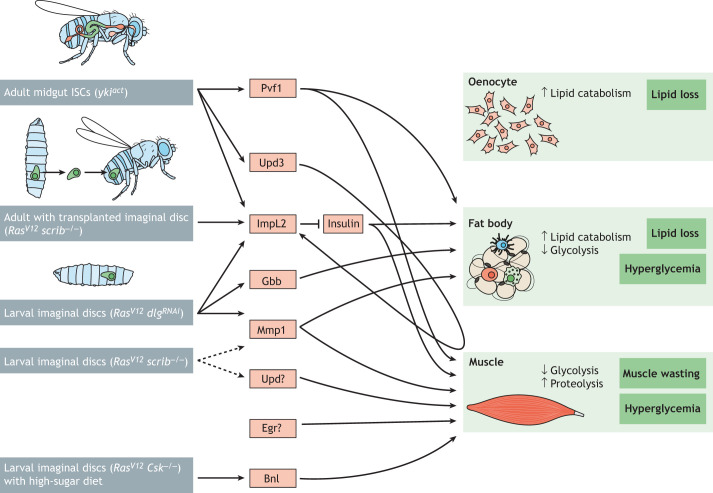Fig. 2.
Crosstalk between Drosophila tumors and host tissues. A schematic showing Drosophila cachectic factors known to be secreted from adult and larval tumor models (genotypes shown in brackets) that are associated with pathologies in the oenocyte, fat body and muscle. Increased lipid catabolism in oenocytes and the fat body leads to lipid loss, while reduced glycolysis in the fat body and muscle causes hyperglycemia. Elevated proteolysis in the muscle leads to muscle wasting. Dashed lines indicate predicted regulatory interactions. Tumors in Drosophila tissues are shown in green. Bnl, Branchless; Csk, C-terminal Src kinase; dlg, disc-large 1; Egr, Eiger; Gbb, Glass bottom boat; ImpL2, Ecdysone-inducible gene L2; ISC, intestinal stem cell; Mmp1, Matrix metalloproteinase 1; Pvf1, PDGF- and VEGF-related factor 1; RasV12, a constitutively active form of Ras oncogene at 85D; scrib, scribble; Upd, Unpaired; Upd3, Unpaired 3; yki, yorkie.

